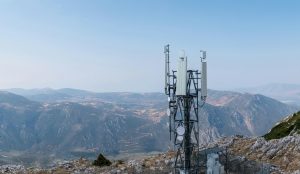The global mobile broadband infrastructure market is poised for significant growth in the coming years, with a projected increase of USD 34.18 billion between 2024 and 2028. This expansion, driven by a compound annual growth rate (CAGR) of 9.4%, is fueled by several key factors:
1. Rising Investment in Emerging Economies: Developing countries are experiencing a surge in mobile broadband infrastructure development. Governments and private entities invest heavily to expand network coverage and capacity, bringing high-speed internet access to underserved populations.
2. Technological Advancements: The rollout of 5G and other advanced technologies is a major catalyst for market growth. These technologies offer significantly faster speeds, lower latency, and greater network capacity, driving demand for upgraded infrastructure.
3. Increasing Demand for Data: The proliferation of data-intensive applications, such as video streaming, online gaming, and cloud computing, is placing immense pressure on existing mobile networks. This necessitates continuous infrastructure upgrades to accommodate the growing data traffic.
4. Growing Adoption of IoT Devices: The Internet of Things (IoT) is connecting billions of devices to the internet, generating massive amounts of data. This necessitates robust mobile broadband infrastructure to support the seamless functioning of these devices.
Challenges:
Despite the positive outlook, the market faces particular challenges:
High Capital Expenditure: Deploying mobile broadband infrastructure requires significant upfront investment, which can be a barrier for smaller players.
Spectrum Availability: Access to adequate radio frequency spectrum is crucial for network deployment. However, spectrum scarcity and regulatory hurdles can hinder market growth.
Cybersecurity Threats: As networks become more complex, the risk of cyberattacks increases. Ensuring network security is paramount to maintaining user trust and preventing disruptions.
The mobile broadband infrastructure market encompasses several key components:
- Network equipment and hardware
- Cell towers and transmission systems
- Data processing and management systems
- Network maintenance and upgrade capabilities
Current market dynamics are shaped by established technological trends, including:
- Ongoing global 5G network deployment
- Growing demand for mobile data services
- Increasing digital connectivity requirements
- Infrastructure modernization needs
Market observers note that this growth period coincides with several industry-wide developments in mobile technology and infrastructure deployment. The projected expansion aligns with the broader evolution of telecommunications infrastructure.
The $34.18 billion growth figure indicates continued investment in fundamental network components and technologies supporting mobile broadband services.



